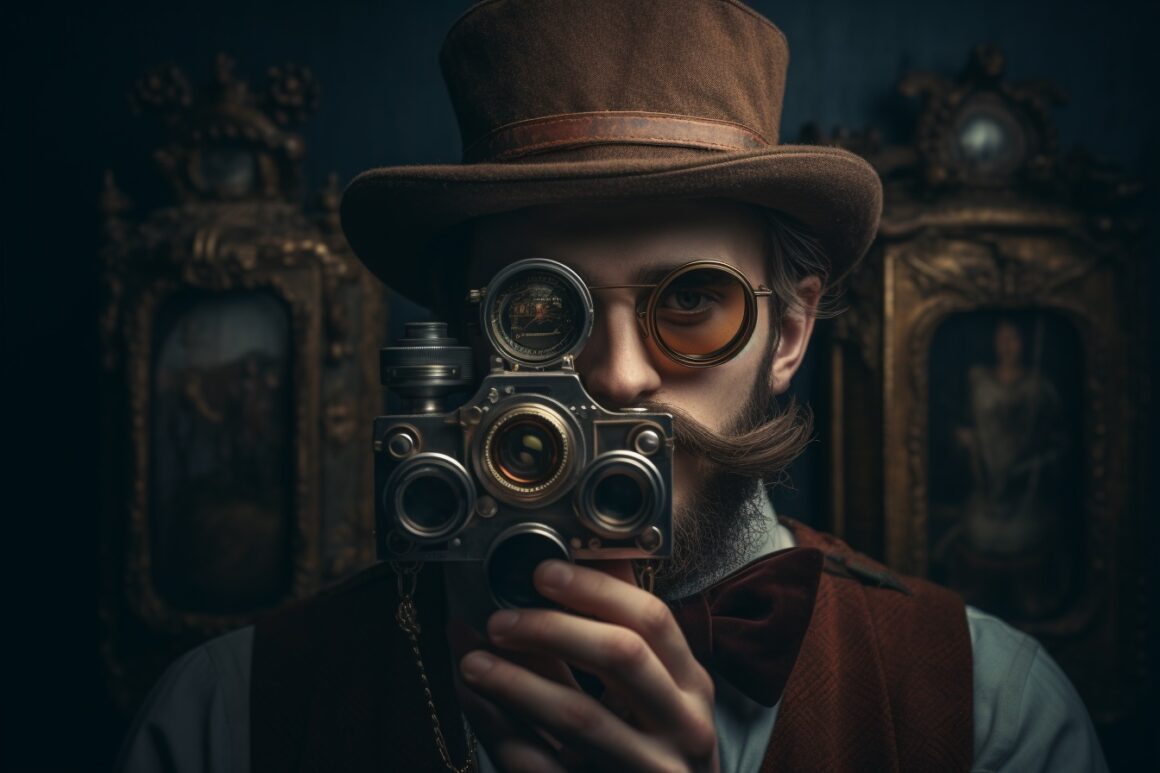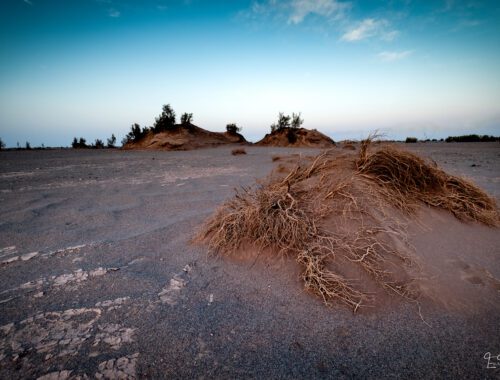
How Ai Is Revolutionizing The World Of Photography
1. Introduction
1.1. Introduction to Artificial Intelligence
Artificial intelligence (AI) is transforming a wide range of sectors, including photography. AI is assisting photographers in unlocking new creative possibilities, from equipment with built-in AI capabilities to software that streamlines editing and organizing.
1.2. The Role of Artificial Intelligence in Photography
This article will look at how AI is improving photography in a variety of ways, from image generation to editing and beyond. We’ll also talk about how AI affects the creative process and answer some common questions concerning AI in photography.
2. The Potential of AI-Integrated Cameras
2.1. Face Recognition Mastery
AI-powered cameras now support facial recognition, allowing for more precise subject focus and better framing. This technology makes it easier for photographers to shoot beautiful portraits.
2.2. Red Eye’s Farewell
AI algorithms can detect and correct red-eye issues instantly, guaranteeing that every shot is immaculate and ready for sharing.
2.3. Intelligent Subject Recognition
AI cameras can recognize and track subjects, keeping them in focus even while they are moving. This technique is perfect for sports photography, wildlife photography, and event photography.
2.4. Zoom and Enhance: A New View
Images can be upscaled by AI algorithms, allowing photographers to magnify and enhance without sacrificing quality. This feature expands the scope of creative cropping and image editing.
3. Artificial Intelligence Evolution: Transforming Photography
3.1. Recognizing the Environment
AI can recognize different ambient components and change camera settings to create great photographs in any situation. Photographers may now concentrate on composition and storytelling rather than technical minutiae thanks to this technology.
3.2. AI Camera Advantages: Unleash Your Potential
Photographers can work more effectively using AI-powered cameras, capturing better photographs with less effort. This technology liberates time and energy for the creative process, allowing photographers to push their limits and experiment with new techniques.
4. AI Tools: A Photographer’s New Best Friend
4.1. AI Image Generation’s Magic
AI can build realistic photographs from scratch, allowing photographers to create one-of-a-kind, attention-grabbing visuals. This technology can be used to help with ideation and conceptualizing photoshoots.
4.2. Utilize AI to Upscale Your Images
Image upscalers driven by AI can transform low-resolution photographs into high-quality masterpieces. This method is ideal for restoring outdated photos or upgrading images obtained with less sophisticated equipment. Topaz Gigapixel is far ahead of its competiotion in this area.
4.3. Use ChatGPT or Bard to Create Inspiring Captions
ChatGPT and Bard, AI text generators, can assist photographers in creating appealing captions, titles, and descriptions for their photos. This technology has the potential to improve your photography and make it more appealing to visitors.
5. Use AI to Improve Your Photography
5.1. Create AI-Driven Moodboards
AI can evaluate enormous image sets to create mood boards that reflect a given aesthetic or subject. This technology can aid photographers in the planning and visualization of their creative work.
5.2. Use AI to Create the Perfect Look
Based on a model’s traits and preferred look, AI can recommend clothing, makeup, and accessories. This technology can save photographers time while still ensuring a polished final output.
5.3. Easily Edit Your Photos
Artificial intelligence-powered photo editing software can streamline the editing process by automating activities like exposure correction, color grading, and object removal. This technique enables photographers to obtain their desired look quickly and without losing quality.
5.4. Intelligent Image Keywording
To assist photographers in achieving their chosen aesthetic, AI can evaluate photographs and provide palettes, dress styles, and makeup trends.
5.3. AI-Assisted Photo Editing
Artificial intelligence-powered photo editing software, such as Luminar AI or Adobe Lightroom’s Enhance feature, can optimize photographs automatically, from exposure and color balance to noise reduction and detail enhancement. This enables photographers to produce professional-quality edits in a timely and effective manner.
5.4. Smart Keywording for Better Image Organization
AI-powered technologies can produce meaningful and accurate keywords for your photographs automatically, making it easier to organize and search through your photo library. This not only saves time, but also ensures that potential clients or partners can readily find your photographs.
5.5. Efficient Culling with AI Support
AI can analyze and rank photographs based on variables such as clarity, composition, and emotion, making the culling process more efficient and faster. This allows photographers to concentrate on choosing the finest photos from a shoot rather than getting mired down in the details.
6. The Ongoing Debate: Is Artificial Intelligence Ruining Photography?
6.1. Artificial Intelligence-Generated Imagery: A New Frontier or a Threat?
While AI-generated images, such as those produced by DeepArt or Jasper AI, provide exciting new avenues for creative expression, some argue that they may diminish the value of human creativity and skill in photography. As AI evolves and gets increasingly interwoven into the realm of photography, the discussion will continue.
6.2. Balancing Artificial Intelligence and Human Creativity
The key to embracing AI in photography is to strike a balance between using AI technology and preserving the human touch that distinguishes photography as an art form. Photographers may continue to push the boundaries of the medium and create truly inspirational work by leveraging the potential of AI to enhance their creativity.
7. The Great Debate: Is Artificial Intelligence Ruining Photography?
As artificial intelligence continues to pervade the world of photography, some say that it endangers the value of human creativity and skill. Others, on the other hand, see AI as a valuable tool that can enhance photographers’ artistic abilities and push the medium’s boundaries. As AI technology progresses, this continuous argument will influence the future of photography.
8 Embracing the Future: How Artificial Intelligence Photography is Changing the World
The use of AI into photography is transforming how we make and experience photos. The possibilities for artistic expression in photography are continuously expanding, from improved camera technology and smarter editing tools to AI-generated imagery. Photographers may push the boundaries of their work and uncover new possibilities for innovation by embracing the potential of AI.
9: The Impact of AI on Photography: A Summary
The impact of artificial intelligence on photography is evident, and it is only anticipated to rise in the next years. Photographers must adapt and evolve as AI technology advances, leveraging AI to complement their creative powers to generate genuinely fascinating, breakthrough images. The future of photography promises to be a fascinating, ever-changing world by establishing a balance between human ingenuity and AI-driven innovation.
10: Accepting the AI-Powered Future of Photography
The world of photography is always changing, and artificial intelligence is playing an important part in defining its future. Photographers may stay ahead of the curve and generate engaging, inventive photographs by knowing and embracing the different ways AI can assist their creativity. The possibilities for creative expression in photography are endless as technology advances.
FAQs
Q: How can artificial intelligence be applied in photography?
A: Artificial intelligence (AI) can be applied in a variety of facets of photography, including camera technology, image editing, topic detection, image upscaling, and even creating captions or descriptions for photos.
Q: What does AI in photography mean?
A: In photography, AI, or artificial intelligence, refers to the combination of machine learning algorithms and intelligent software that can assess and optimize many aspects of the photographic process, such as exposure, focus, and image enhancement.
Q: How does artificial intelligence (AI) operate in photo editing?
A: In photo editing, AI may evaluate an image and apply adjustments such as exposure correction, color balance, and noise reduction based on the image’s individual demands.
Q: Will artificial intelligence take over photography?
A: While artificial intelligence is progressively being integrated into numerous parts of photography, it is unlikely to completely replace human photographers. Instead, AI can be viewed as a tool that boosts creativity and allows photographers to push their work to new heights.
Q: What are the advantages of artificial intelligence in photography?
A: Artificial intelligence (AI) has several applications in photography, including improved camera technology, more efficient post-processing, and expanded creative possibilities. Photographers can focus on their creativity and produce stunning, one-of-a-kind photographs by leveraging the power of AI.


